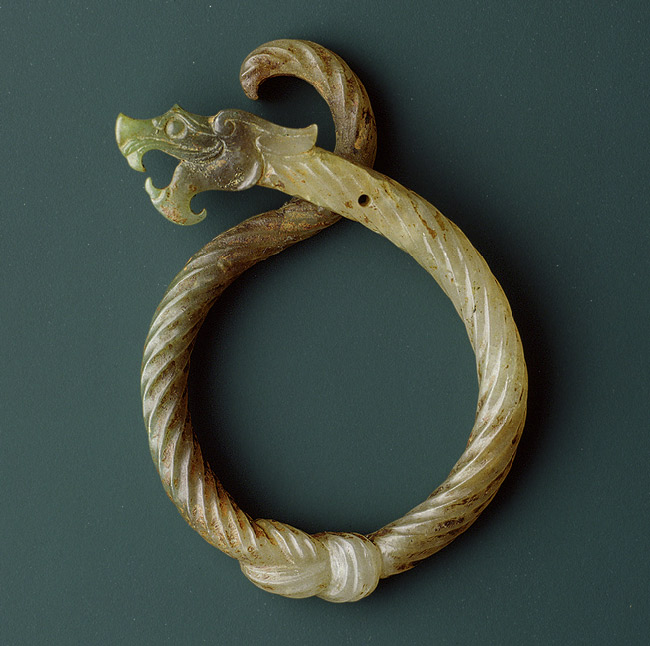New book by Shifu Zhang Yun:
http://www.northatlanticbooks.com/catal ... 1583942277
Taiji Dao
8 posts • Page 1 of 1
Re: Taiji Dao
So have you read it?
The What style form is shown in the book?
The What style form is shown in the book?
Never confuse movement with action.
-Ernest Hemingway
-Ernest Hemingway
- Ben
- Great Old One
- Posts: 431
- Joined: Wed May 14, 2008 3:11 pm
- Location: Dahlonega, GA
Re: Taiji Dao
He hasn't read it because it isn't scheduled to be released until June 2009. It's Wu style. At 600 pages this is likely the most info on taiji saber you could get.
Dave C.
Dave C.
Time to put the QUAN back in taijiQUAN. Time to put the YANG back in YANG style taiji.
-

Formosa Neijia - Great Old One
- Posts: 803
- Joined: Tue May 13, 2008 4:10 am
- Location: Taipei, Taiwan
Re: Taiji Dao
Ben wrote:The What style form is shown in the book?
Googling I reckon Wu Taiji??
http://www.geocities.com/ycgf/taiji.htm
Im in for a copy
Last edited by Inner_man on Tue Nov 04, 2008 9:51 pm, edited 1 time in total.
"Deja Moo" - When you think youve heard this bullshit before..........
- Inner_man
- Mingjing
- Posts: 73
- Joined: Wed Oct 15, 2008 4:19 pm
- Location: Auckland, New Zealand
Re: Taiji Dao
Chris Fleming wrote:New book by Shifu Zhang Yun:
http://www.northatlanticbooks.com/catal ... 1583942277
I have his The Art of Chinese Swordsmanship but haven't read it yet. There was an article in Tai Chi magazine recently about Tai Ji Dao, it was cool.
"The powers that be don't give a shit!" - Raybeez RIP
-

zenshiite - Wuji
- Posts: 1460
- Joined: Sun Jun 15, 2008 6:05 pm
Re: Taiji Dao
I proof read and edited some of the chapters.
The book covers history or dao, description of Taiji Dao, basic techniques that can be done with Taiji Dao, the Wu Style 13 posture form, various drills, including a two handed drill, applications in detail, and how to apply Taiji idea in dao skills.
It's a lot of material. The publisher decided on the name Complete Taiji Dao, then they objected to the length of the book and want to cut certain materials out, like the two handed combat drills. Then we're like "how can you call it 'complete' then?". They relented and kept everything in. That was very nice of them.
The Taiji Dao as passed down by Beijing groups is different from standard broadsword. It's like Miao Dao except the Yin Yang guard and ring pummel. I think the Yang group's form is very similar. Dao is dao, Taiji is taiji . Besides the shorter stance and tilted front foot, there shouldn't be an meaningful differences between Wu style form and others.

Unlike the standard broadsword, this type of dao was developed by Qi Ji Guang based on his experience fighting Japanese pirates. It is classified under chang (long) dao.

The taiji groups added the special guard, designed to trap weapons, especially the spear. In the old days, if you studied weapons, big part of the practice is how to fight against other common types of weapons. Number one on that list is spear, as it is one the most common as well as the longest, most powerful, and most changeable weapon. Given those features, the exception is spear: when you study spear, you only need to worry about other spears.
So many of the applications in this book is how to fight against spear. This is why the Taiji dao is so long: with the tip touching the ground, the ring pummel should reach your sternum. This is because when you have a spear, and the other person has a short weapon, the main strategy is to attack his feet until he lost control of footwork, then it's easy to attack the torso or head. A proper taiji dao should be long enough that you can cover your feet without hunching over.
The other unique feature of taiji dao is that it has an edge in the front 1/4 of the blade. This is actually a very common design is knife design. An extremely useful feature in real life, allowing you to quickly counterattack without having to turn the entire blade over. For this reason taiji dao is also called 'dan bei jian' - single backed jian.
The book mentions this: the ring pummel is for adding more power when necessary. Generally, high level masters prefer weapons that are lighter and very changeable (can quickly change at any moment). A lot of subtle skills can be used that way. The flip side is, that makes the weapon weaker, more vulnerable. For this reason only people with high level skill can use a very light weapon.
In engineering this is very well known phenomenon called design tradeoff: for a weapon you want power, speed, protection, mobility. But those traits are inherently contradictory. The stronger the weapon, the heavier it is, the slower and less maneuverable it is. Same for techniques: if you use both hands, the cut is stronger, but your range of motion, and ability to react/change quickly would not be as good as single handed. In the case Taiji Dao, and Japanese katana it's based on, the design compromise tilts toward maneuverability: go light, but allow it be used with both hands. In Taiji dao, the second hand is placed on the ring to add power (In katana you grab the end of the handle in the center of the palm, not both ends on handle). This is not a powerful as both hands on the handle, but the designers/users of these weapons obviously decided the longer length handle is not worth the tradeoff entailed.
Traditionally, the form is done using one hand, the two handed usage is hidden. This book talks about how to use both hands. Also, traditionally it's very common to pair dao with hidden weapons, like rocks, darts, throwing knives, etc. When doing the form those applications are not done explicitly, but are hidden in the movement of the free hand. This book also discussed which of the 13 postures contain movements for hidden weapons, the type, and placement of those hidden weapons on the body, etc.
Wuyizidi
The book covers history or dao, description of Taiji Dao, basic techniques that can be done with Taiji Dao, the Wu Style 13 posture form, various drills, including a two handed drill, applications in detail, and how to apply Taiji idea in dao skills.
It's a lot of material. The publisher decided on the name Complete Taiji Dao, then they objected to the length of the book and want to cut certain materials out, like the two handed combat drills. Then we're like "how can you call it 'complete' then?". They relented and kept everything in. That was very nice of them.
The Taiji Dao as passed down by Beijing groups is different from standard broadsword. It's like Miao Dao except the Yin Yang guard and ring pummel. I think the Yang group's form is very similar. Dao is dao, Taiji is taiji . Besides the shorter stance and tilted front foot, there shouldn't be an meaningful differences between Wu style form and others.

Unlike the standard broadsword, this type of dao was developed by Qi Ji Guang based on his experience fighting Japanese pirates. It is classified under chang (long) dao.

The taiji groups added the special guard, designed to trap weapons, especially the spear. In the old days, if you studied weapons, big part of the practice is how to fight against other common types of weapons. Number one on that list is spear, as it is one the most common as well as the longest, most powerful, and most changeable weapon. Given those features, the exception is spear: when you study spear, you only need to worry about other spears.
So many of the applications in this book is how to fight against spear. This is why the Taiji dao is so long: with the tip touching the ground, the ring pummel should reach your sternum. This is because when you have a spear, and the other person has a short weapon, the main strategy is to attack his feet until he lost control of footwork, then it's easy to attack the torso or head. A proper taiji dao should be long enough that you can cover your feet without hunching over.
The other unique feature of taiji dao is that it has an edge in the front 1/4 of the blade. This is actually a very common design is knife design. An extremely useful feature in real life, allowing you to quickly counterattack without having to turn the entire blade over. For this reason taiji dao is also called 'dan bei jian' - single backed jian.
The book mentions this: the ring pummel is for adding more power when necessary. Generally, high level masters prefer weapons that are lighter and very changeable (can quickly change at any moment). A lot of subtle skills can be used that way. The flip side is, that makes the weapon weaker, more vulnerable. For this reason only people with high level skill can use a very light weapon.
In engineering this is very well known phenomenon called design tradeoff: for a weapon you want power, speed, protection, mobility. But those traits are inherently contradictory. The stronger the weapon, the heavier it is, the slower and less maneuverable it is. Same for techniques: if you use both hands, the cut is stronger, but your range of motion, and ability to react/change quickly would not be as good as single handed. In the case Taiji Dao, and Japanese katana it's based on, the design compromise tilts toward maneuverability: go light, but allow it be used with both hands. In Taiji dao, the second hand is placed on the ring to add power (In katana you grab the end of the handle in the center of the palm, not both ends on handle). This is not a powerful as both hands on the handle, but the designers/users of these weapons obviously decided the longer length handle is not worth the tradeoff entailed.
Traditionally, the form is done using one hand, the two handed usage is hidden. This book talks about how to use both hands. Also, traditionally it's very common to pair dao with hidden weapons, like rocks, darts, throwing knives, etc. When doing the form those applications are not done explicitly, but are hidden in the movement of the free hand. This book also discussed which of the 13 postures contain movements for hidden weapons, the type, and placement of those hidden weapons on the body, etc.
Wuyizidi
Last edited by Wuyizidi on Thu Nov 06, 2008 12:58 pm, edited 13 times in total.
-

Wuyizidi - Great Old One
- Posts: 1068
- Joined: Tue May 13, 2008 5:22 am
Re: Taiji Dao
I was about to make a snarky comment about the bouquet, but then I read the url. RIP.
-

Bär - Great Old One
- Posts: 2874
- Joined: Tue May 13, 2008 8:28 am
Re: Taiji Dao
Bär wrote:I was about to make a snarky comment about the bouquet, but then I read the url. RIP.
I know, I was trying to find a picture without it. Just changed it

Last edited by Wuyizidi on Thu Nov 06, 2008 12:27 pm, edited 1 time in total.
-

Wuyizidi - Great Old One
- Posts: 1068
- Joined: Tue May 13, 2008 5:22 am
8 posts • Page 1 of 1
Return to Xingyiquan - Baguazhang - Taijiquan
Who is online
Users browsing this forum: No registered users and 53 guests
